The new MINI carries forward its predecessor’s aspiration to remaining the leading original of the premium small car segment, underpinning its outstanding position with significant advancements in all areas relating to driving fun, quality and individual flair. The evolutionary refinement of its design signals the more mature character of the new model, reflected in a significant optimisation of such aspects as space, safety, fittings, materials and finish quality as well as sportiness and ride comfort. The enhancement of product substance embodied in the new edition of the MINI derives directly from the BMW Group’s outstanding development expertise and takes on a more extensive form than ever before in the history of the brand. A new generation of engines increases driving fun and efficiency, and there is a wider selection of innovative driver assistance systems as well as MINI Connected infotainment facilities. LED headlamps, the MINI Head-Up Display, Emergency Call and the MINI Connected XL Journey Mate with Real Time Traffic Information are other highlights in the equipment program only previously found in higher vehicle segments, further underscoring the premium character of the new MINI.
Three entirely newly developed power units featuring MINI TwinPower Turbo Technology are available to choose from at the market launch of the new MINI in spring 2014. The new MINI Cooper has a 3-cylinder petrol engine with a peak output of 100 kW/136 bhp. The 4-cylinder petrol engine of the Mini Cooper S mobilises 141 kW/192 bhp. The new MINI Cooper D is powered by a 85 kW/116 bhp 3-cylinder diesel engine. Another new feature: the standard 6-speed manual transmission, along with a 6-speed automatic transmission that is optionally available for all engine variants. Increased engine efficiency, extensive MINIMALISM technology, optimised weight and enhanced aerodynamic properties go together to produce a reduction in fuel consumption figures of up to 27 per cent as compared to predecessor models. The new front-runner in terms of efficiency is the MINI Cooper D with an average fuel consumption of 3.5 to 3.6 litres per 100 kilometres (EU test cycle figures, dependent on tyre format selected). All model variants of the new MINI also meet the EU6 exhaust emission standard.
Classic MINI proportions, the characteristic three-way separation of body corpus, all-round greenhouse and roof together with a new take on hallmark design features define the exterior of the new model, which has grown by some ten centimetres in length. Its interior offers extended spatial comfort on all four seats as well as a luggage compartment volume expanded by 51 litres to a total of 211 litres.
A new display and operating concept combines the typical brand-style look and feel of the cockpit with optimised functionality. Road speed and engine speed along with other key driving-related information is shown in the newly designed instrument cluster on the steering column. The characteristic central instrument with an optional colour display of up to 8.8 inches in size provides feedback on operations performed using the MINI Controller in the centre console as well as giving visual feedback on driving condition and on numerous functions activated by the driver.
The new MINI Driving Modes allow an individual set-up involving not just the characteristic curve of the accelerator and steering but also engine acoustics, and in the MINI Cooper S – where the relevant features are fitted – ambient lighting, the shift times of the automatic transmission and the characteristics of Dynamic Damper Control, the latter system being optionally available for the first time. The modes SPORT and GREEN can be activated in addition to the standard MID mode. In conjunction with an automatic transmission, the efficiency-oriented GREEN mode also features a coasting function with decoupled drivetrain.
The range of optional driver assistance systems has been significantly expanded. For the first time there is an extendible Head-Up Display above the steering column available for the new MINI, a Driving Assistant system including camera-based active cruise control, collision and pedestrian warning, high beam assistant and road sign detection, and also a parking assistant and a rear view camera.
Unique within the competitive environment, the MINI in-car infotainment program likewise moves into a whole new dimension. As the first car in its segment the new MINI can be fitted with a SIM card which is permanently installed in the car. This means that Emergency Call with automatic detection of vehicle location and accident severity is available, as well as MINI Teleservices. Functions which can be integrated in the vehicle via apps in the areas of social networks and infotainment are now available for both the Apple iPhone and for smartphones using the operating system Android.
The new MINI sets out to continue the global success story of the first ever premium automobile in the small car segment. At the same time it carries forward the tradition of the classic MINI that stretches back over more than 50 years. Its design reflects these historical roots as well as an evolutionary refinement of the modern vehicle concept. The hallmark brand proportions have been preserved thanks to precisely defined expansion of the exterior dimensions. These also help give the new MINI a compact and powerful appearance which symbolise its agile character, geared consistently towards inspiring driving fun.
The body of the new MINI is 3 821 millimetres long (MINI Cooper S: 3 850 millimetres), 1 727 millimetres wide and 1 414 millimetres wide. This makes it 98 millimetres longer, 44 millimetres wider and 7 millimetres higher than its predecessor. The wheelbase has been extended by 28 millimetres to 2 495 millimetres, while the track width has been enlarged at the front by 42 millimetres and at the rear by 34 millimetres to a total of 1 501 millimetres in each case (MINI Cooper S: 1 485 millimetres). Cornering agility and ride comfort benefit from these new dimensions as do the amount of space available to occupants and the luggage compartment volume. The extended adjustment range of the front seats, a seat surface lengthened by 23 millimetres and a perceptible increase in shoulder room provide more foot space and freedom of movement as well as optimised entry comfort for rear passengers. Luggage compartment volume has been increased by 51 litres to 211 litres.
Like its proportions, the car’s hallmark brand styling and the three-way separation of body structure that is so typical of MINI both contribute to its unmistakable appearance. The corpus, greenhouse and roof on top are clearly separated from one another in visual terms. The glass surface with the dark body columns forms a harmonious cover extending across the entire automobile. From the side view, the window graphic tapering off to the rear creates a dynamic wedge shape which is suggestive of the forward thrust characterising the new MINI.
The wide track and short overhangs emphasise the vehicle’s corpus more strikingly than ever before as it sits powerfully on top of the wheels. The athletic stature of the new MINI is additionally underscored by the visual link between the front and rear wheel arches. This is created by means of a striking sill line along with a character line running above and virtually parallel to it in the side view. The two lines feature a dynamic downward curve at both front and rear, thereby directing attention to the two large wheel arches.
Traditional design features such as the hexagonal contour of the radiator grille, the side indicator surrounds known as side scuttles, the circular headlights, the upright rear light clusters and the black periphery around the bottom edge of the body are reinterpreted. Selected design features are given a particularly high-end emphasis by means of a novel surface design in their specific environment. The contours of the headlamps, rear light clusters and wheel arches are highlighted by means of precise edging. The visual effect of the side scuttle elements and the additional headlights in the front apron is enhanced by means of striking lines on the adjacent surfaces in each case.
The MINI Cooper S draws its model-specific sporty flair from such features as a radiator grille with honeycomb pattern, an additional opening in the bonnet, brake air ducts integrated in the lower air inlets and a separate rear apron with exhaust tailpipes arranged at the centre. In addition to the side scuttle elements, the radiator grille of this model variant now also bears an “S” logo with chrome surround.
Detailed design revision has been applied to both the classic circular headlamps, featuring a wide chrome ring surround, and the likewise circular additional headlamps integrated in the front apron. The light sources of the headlamps are clearly structured, with the arched turn indicators arranged in the lower section. In the standard version, the daytime driving light and the side light is produced inside the additional headlights, while fog lamps can also be included here as an optional extra.
The new MINI is the first car in its segment to offer the option of LED headlamps. The bright white LED units provide the light source for both low and high beam. They are also surrounded by an LED daylight driving ring, the lower section of which reaches down to the white turn indicators. Another option is an adaptive light distribution function that ensures optimum illumination of the road surface and roadside – depending on situation and route profile – and also includes a turning light. The optional fog lamps are likewise available in halogen or LED, according to preference. In conjunction with the LED headlamps, the rear light clusters also come as LED units.
For the market launch of the new MINI, the selection of exterior body finishes has been extended to include five new colours. The roof and exterior mirror caps can be finished in a contrasting colour – white or black – as an option and at no extra cost. Roof rails are also available for the new MINI for the first time. Other ways of adding a touch of individual style include white or black bonnet stripes and Chrome Line for the exterior.
Precise lines, high-end colour and material combinations and modern functionality highlight the orientation of the new MINI towards driving fun and a premium interior ambience. The horizontal structure of the cockpit and the circular or elliptical contours of key features such as air outlets, instruments and door trim elements are classic design components which take on a more sophisticated and especially high-quality form in the new MINI. A new display and operating concept provides the ideal basis for safe, intuitive and convenient control of the driver assistance, infotainment and comfort systems, which have been significantly expanded in terms of the functions available.
One of the most important new features is the instrument cluster on the steering column. Road speed, engine speed and fuel level are displayed on vertically arranged circular instruments. The speedometer scale includes a colour panel for Check Control messages, vehicle status displays and visual indicators relating to driver assistance systems currently activated.
Key insertion as previously required is no longer necessary in the cockpit of the new MINI. As soon as the key is inside the car, the engine of the new MINI can be started by pressing the toggle-type start/stop button located in the middle of the centre console, which lights up red. Above the toggle switch there are three circular control switches for heating and air conditioning. The operating switches for the headlamps and fog lamps have also been repositioned and are now located on the instrument cluster next to the steering wheel. The electrically controlled power window lifts in the new MINI are integrated in the door trim panels.
Central instrument with new functions and impressive lighting configuration.
With its new indicator elements and extended functionality, the hallmark MINI central instrument intensifies interaction between driver and car. Depending on the car’s fittings, the centre of its interior surface serves as a 4-line TFT display or else a colour screen up to 8.8 inches in size which shows operating feedback for vehicle functions, air conditioning, infotainment and communication, navigation maps and route directions as well as the special graphics for MINI Connected Services. The selection and control of these functions is facilitated by a new controller in the centre console which comes in conjunction with the Radio MINI Visual Boost or the MINI navigation system. Rotary, pressure and shift movements as well as one-touch and bookmark buttons allow for intuitive, safe and convenient operation based on the principles of the BMW iDrive system – a ground-breaking force throughout the entire automotive sector.
The innovative display and operating concept is supported by a lighting design in the area of the central instrument which is unique to MINI. LED units around the outer edge of the circular instrument – optionally available in six colours – can respond to the current situation on the road and to specific operating steps, according to driver preference. For example, the hand movements of the road speed and engine speed display in the instrument cluster are underpinned by parallel light impulses at the edge of the central instrument. When Park Distance Control is activated, the remaining distance to obstacles is shown by means of a ring of light which is illuminated in green, yellow or red – supplementing the graphic display. A change in the desired interior temperature is confirmed by LED units which light up in blue or red. Route guidance information provided by the navigation system is also visually supported by the illuminated ring: the closer the car gets to the turn-off point, the smaller the lit-up area at the edge of the central instrument.
Typical MINI diversity of colours and materials for maximum individual flair.
Increased interior space and a wide range of clever details make for further advancements in the area of functionality. The rear backrest with a 60 : 40 split is not only foldable, its tilt angle can be adjusted too. Numerous cupholders and storage facilities make it easy to take drinks and travel utensils along in the car, and there is an additional storage compartment behind the decorative strip on the passenger side. A storage package is also optionally available that includes a double load compartment floor, additional lashing eyes and nets for the luggage compartment, along with map pouches for the backrests of the front seats.
Seats in a fabric/leather combination and leather finish are offered as an alternative to the standard fabric version. The MINI Cooper S is fitted with sports seats as standard: these are available as optional extras for all other variants. A model-specific selection of upholstery colours, interior surfaces, Colour Lines and other design features – including Chrome Line for the interior and the lighting package with LED interior lights and orange-coloured ambient lighting – offers a wide range of possibilities for interior customisation.
New engines with MINI TwinPower Turbo Technology.
The launch of the new MINI sees a change of generation in the area of engines. For the first time both 3-cylinder and 4-cylinder engines are used, all featuring MINI TwinPower Turbo Technology. In the petrol engines of the new MINI Cooper S and the new MINI Cooper this includes turbocharging, direct fuel injection, variable camshaft control on the intake and exhaust side (double VANOS) and variable valve control in the form of VALVETRONIC, as patented by the BMW Group. The diesel engine of the new MINI Cooper D has a turbocharging system with variable turbine geometry and the latest generation of common rail direct injection with fuel injection pressure increased to 2 000 bar for high-precision fuel metering and clean combustion. The result: a further boost to driving fun along with increased efficiency and adherence to the EU6 exhaust emission standard. All model variants of the new MINI have improved engine and driving performance figures while their fuel consumption and emission levels have been reduced as compared to the predecessor models by as much as 27 per cent.
For highly spirited power delivery, the new MINI Cooper S is powered by a 2.0-litre 4-cylinder engine with a peak output of 141 kW/192 bhp which goes on stream between 4 700 and 6 000 rpm, delivering its maximum torque of 280 Newton metres at 1 250 rpm. Torque can even briefly be increased to 300 Newton metres by means of an overboost function. As a result, acceleration from zero to 100 km/h takes just 6.8 seconds (automatic: (6.7 seconds), while the top speed is 235 km/h (233 km/h). The average fuel consumption of the new MINI Cooper S is 5.7 to 5.8 litres (5.2 to 5.4 litres) per 100 kilometres, while its level of CO2 emissions 133 to 136 grams per kilometre (122 to 125 g/km; EU test cycle figures, dependent on tyre format selected).
With output increased by 10 kW/14 bhp to 100 kW/136 bhp between 4 500 and 6 000 rpm and a maximum torque of 220 Newton metres (230 Nm with overboost), now available at 1 250 rpm, the 1.5-litre 3-cylinder petrol engine in the new MINI Cooper also enables much sportier driving performance than the predecessor power unit. The new MINI Cooper sprints in 7.9 seconds (automatic: 7.8 seconds) from standing to 100 km/h, while its top speed is 210 km/h in each case. These figures are combined with an average fuel consumption which has been reduced to between 4.5 and 4.6 litres (4.7 to 4.8 litres) per 100 kilometres and a CO2 emissions level of 105 to 107 grams per kilometre (109 to 112 g/km; EU test cycle figures, dependent on tyre format selected).
New automatic transmission with optimised efficiency.
The automatic transmission, also newly developed, make an additional contribution to improved efficiency. The new MINI is fitted as standard with a 6-speed automatic transmission available for all variants of the new MINI offers improved efficiency, enhanced shift comfort and increased shift dynamics. These advancements have been achieved by means of such elements as a more efficient transmission control system, a more direct connection and optimised hydraulics. The new MINI also combines automatic transmission with the automatic engine start/stop function for the first time, preventing unnecessary fuel consumption caused by idling at junctions or in congested traffic. An additional option is the 6-speed sports automatic transmission which enables even shorter shift times and can be operated in manual mode using shift paddles at the steering wheel.
In conjunction with the MINI navigation system, the automatic transmission is also able to take account of the route profile in controlling gear shifts. Based on navigation data, the appropriate drive position is selected to match the imminent situation on the road, e.g. directly prior to junctions or on corners. This prevents unnecessary upshifts between two bends in quick succession, for example.
The MINIMALISM technology which comes as standard includes not only the automatic engine start/stop function and extensive measures to optimise weight and aerodynamic drag in the new MINI but also a shift point display function for automobiles with manual transmission, brake energy recuperation and needs-oriented control of the fuel pump, coolant pump and other ancillary units. The electromechanical power steering is equally as energy-efficiency as the map-controlled oil pumps in all engines. An optimised preheating process reduces the energy required to start the diesel engine by around 50 per cent.
Depending on the model variant, a significant optimisation of aerodynamic properties is achieved by such measures as active cooling air flaps, extensive underbody trim and air ducting elements in the upper section of the C columns. With a drag coefficient (Cd value) of 0.28 (MINI Cooper, MINI Cooper D), the new MINI is the segment leader in terms of aerodynamics, too.
MINI Driving Modes: sporty flair and efficiency and turn of a switch.
The new MINI Driving Modes option provides an excellent basis for fuel efficient motoring. A rotary switch at the base of the gear or selector lever is used to activate either the standard MID mode, the SPORT or the GREEN mode. In addition to the characteristic curve of the accelerator and steering and engine acoustics, the MINI Driving Modes also influence the ambient lighting, the shift characteristics of the automatic transmission and the Dynamic Damper Control configuration in the MINI Cooper S – in so far as these features are fitted. The choice is between a set-up which is either very sporty, comfortable and well-balanced or else geared towards fuel efficiency.
In GREEN mode – supporting a relaxed and more fuel-efficient driving style – the energy used by electrically powered comfort functions such as air conditioning and exterior mirror heating is reduced. In cars fitted with automatic transmission it is also possible to use the coasting function. The drivetrain is decoupled at speeds of between 50 and 160 km/h as soon as the driver removes their foot from the accelerator pedal. The new MINI then rolls at idling engine speed at a minimum rate of minimal fuel consumption.
Optimised suspension technology: less weight, more go-kart feeling.
The refinement of suspension technology in the new MINI keeps to the well-established design principle of the single-joint spring strut axle at front along with a multilink rear axle that is unique within the competitive environment, as well as featuring extensive optimisation of all components in terms of material selection and geometry. All improvements are aimed at intensifying the experience of the agile MINI handling properties, commonly known as the go-kart feeling. The set-up of the wheel suspension, body mounting, vehicle suspension, damping, steering and brakes takes account of the increased level of engine power and the typical MINI concept consisting of front-wheel drive, transversely mounted engine at the front, low centre of gravity, short overhangs, wide track and rigid, weight-optimised body structure.
In order to reduce weight and increase component rigidity, the new front axle is fitted with aluminium swivel bearings as well as axle supports and wishbones made of high-strength steel. The modified front axle kinematics supports the agile turn-in response and precise steering sensation of the new MINI. The share of high-strength steel used in the rear axle has also been increased. Tube-shaped stabilisers at the front and rear axle likewise contribute to weight reduction. There is also an innovative axle bearing which benefits both ride comfort and agility.
Premiere for Dynamic Damper Control in the new MINI.
The newly configured suspension and damping systems have been reduced in weight. The dampers are decoupled at the front and rear axle by means of triple-path support bearings. Another new addition to the MINI equipment program is Dynamic Damper Control. Two characteristic lines are available for damper set-up, allowing activation of either a more comfort-oriented response or a direct, sporty response to road bumps, depending on the given situation. The compression and rebound stage are adjusted by means of electrical control of the EDC valves.
The electromechanical power steering has also been subjected to extensive further development. So-called torque steer compensation prevents self-steering tendencies caused by differing degrees of torque at the drive wheels. Steering precision has also been optimised for sudden avoidance swerves and when taking bends in very sporty style. Standard features also include the speed-related steering assistance system Servotronic.
In addition to the anti-lock system ABS, electronic brake force distribution EBD, Cornering Brake Control (CBC) and the brake assistant, the driving stability control system DSC (Dynamic Stability Control) in the new MINI also includes a drive-off assistant, a brake dry function, Fading Brake Support and DTC mode (Dynamic Traction Control), which permits controlled slip at the drive wheels so as to facilitate driving off on loose sand or deep snow. When the driving stability system is deactivated (DSC Off mode), there is an electronic locking function for the front axle differential which selectively and appropriately brakes a spinning drive wheel on tight corners, redirecting the drive torque to the other wheel. This system, known as Electronic Differential Lock Control (EDLC), thereby promotes the car’s forward momentum without negatively influencing self-steering response. The new MINI Cooper S also features the Performance Control system, which counteracts any tendency to understeer prior to reaching the threshold level so as to support an agile yet neutral driving response on bends.
The 15-inch forged light alloy wheels of the new MINI Cooper and the new MINI Cooper D have a particularly low weight as well as favourable aerodynamic properties. The new MINI Cooper S is fitted with 16-inch light alloy wheels as standard. Other light alloy wheels up to a size of 18 inches are available as part of the program of options and accessories.
Less weight, more safety and greater agility due to intelligent lightweight construction.
Further development in the body area was focused on optimising structure, which impacts positively on both the driving properties and the crash response of the new MINI. Intelligent lightweight construction means that weight reduction in the new MINI is combined with an increase in rigidity, thereby promoting both agility and occupant protection. In spite of its extended range of fittings, virtually all variants of the new MINI are lighter than their respective predecessor models. They also weight less than their competitors in the segment.
Highly resilient bearing structures, deformation zones in optimum design and an extremely stable passenger cell provide an excellent basis for keeping impact energy away from passengers and ensuring maximum occupant protection. The safety concept of the new MINI is geared towards achieving maximum scores on all the relevant crash tests worldwide.
Comprehensive safety technology including pedestrian protection.
The standard safety fittings of the new MINI comprise front and side airbags as well as curtain airbags for the front and rear seats. All seats are fitted with 3-point seat belts with belt tensioners and belt force limiters at the front and ISOFIX child seat mountings provided at the rear.
There are also impact absorbers, precisely defined deformation elements and a partially active bonnet, all of which are elements that minimise the risk of injury to pedestrians. In the event of a collision with a pedestrian, which is registered by special sensors, a pyrotechnical trigger mechanism raises the engine compartment lid. This creates additional deformation space and significantly reduces the risk of injury when impacting against very hard parts of the engine.
Innovative driver assistance systems increase convenience and safety.
Further evidence of the technological progress ushered in with the new edition of the MINI is to be found in the program of driver assistance systems – available for the first time in a model of the British brand. New features include the MINI Head-Up-Display which shows information relevant to the driver on an extendible monitor in the upper section of the dashboard between the windscreen and steering wheel. The MINI Head-Up Display promotes concentration on the road by displaying information directly in the driver’s line of sight. It can then be read quickly and conveniently without averting one’s eyes from the road. The information that can be shown in the MINI Head-Up Display includes speed in figures, navigation directions in the form of arrow graphics and junction sketches, visual signals for collision warning, display symbols generated by Speed Limit Info and No Passing Info, Check Control messages and entertainment program details such as radio channels and track titles. The graphics on the high-resolution screen are clearly visible in all light conditions.
Other innovations in the area of driver assistance systems for the new MINI include the Driving Assistant option. This comprises a camera-based cruise control and distance control function which automatically maintains a distance from the vehicle ahead, and the collision and pedestrian warning system with initial brake function. In critical situations, the driver is first provided with a visual signal in the form of a graphic symbol that appears in the instrument cluster; this is supplemented at the second warning level by an acoustic signal prompting the driver to react. In addition to this, an automatic brake manoeuvre is triggered in the case of an imminent collision with a pedestrian or if there is a risk of a rear-on collision in urban traffic. Here the new MINI is decelerated at medium brake force. Depending on the situation, this can either prevent an impact occurring altogether or else significantly reduce the severity of the accident. As the automatic deceleration is activated, the driver is also given an unmistakable prompt to intervene.
Other elements of the Driving Assistant are a road sign detection function which registers and displays speed limits and overtaking bans on the current route, and also the high beam assistant which takes into account environmental brightness as well as oncoming vehicles and those travelling ahead when controlling the high beam.
A rear view camera and parking assistant are also available for the new MINI. The video images supplied by the rear view camera underneath the tailgate handle are shown on the on-board computer in the central instrument as an aid when manoeuvring and reverse parking. Meanwhile the parking assistant facilitates selection and use of parking spaces parallel to the road. The system automatically detects suitable parking spaces at the roadside. As the car then manoeuvres into the chosen space, the parking assistant takes care of all the necessary steering movements on behalf of the driver. All the driver has to do is operate the accelerator, brake pedal and gear selection in order to move safely and conveniently into the parking space.


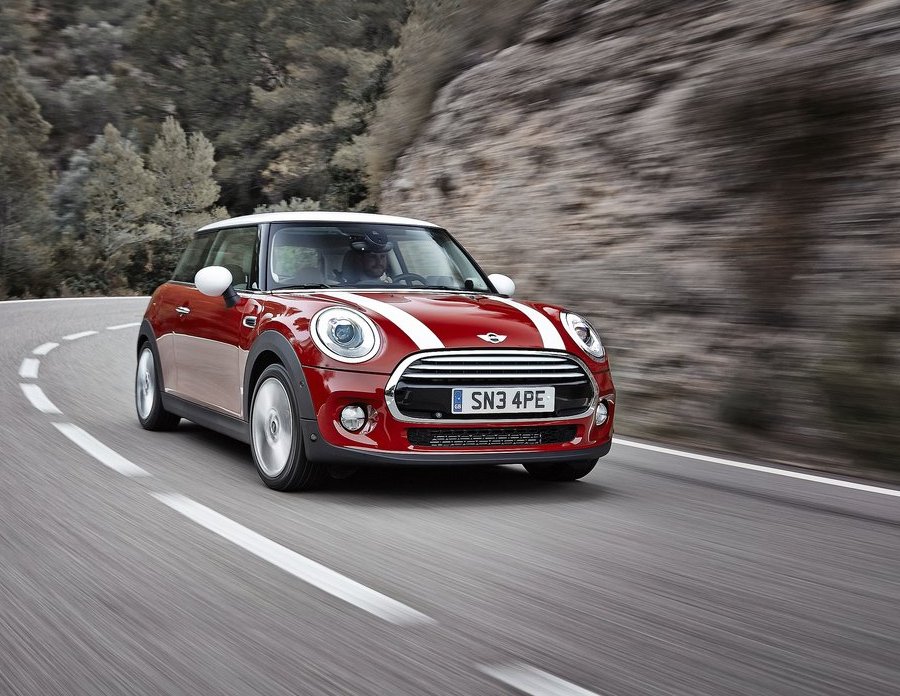
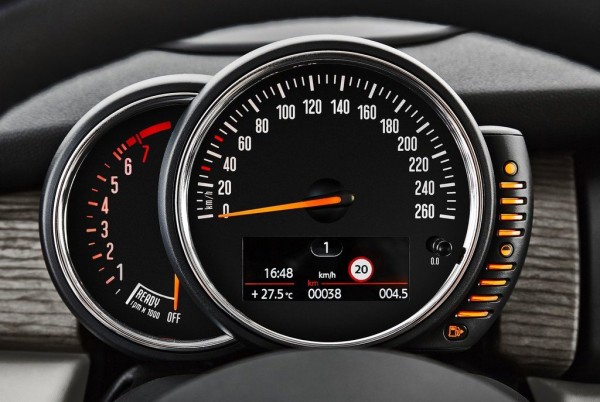
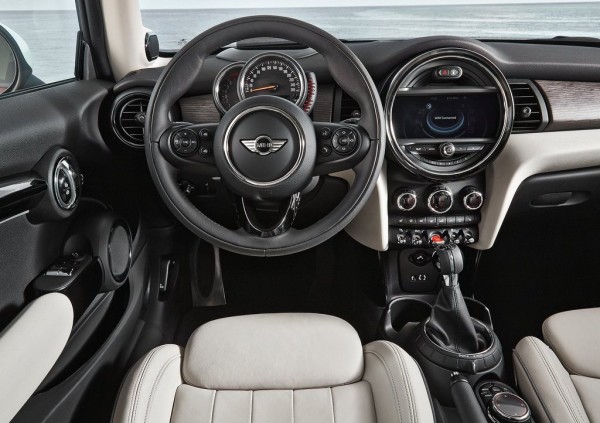
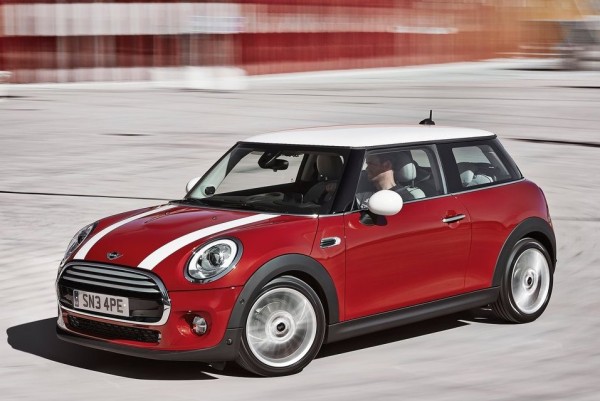
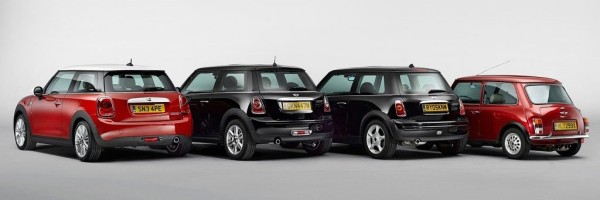
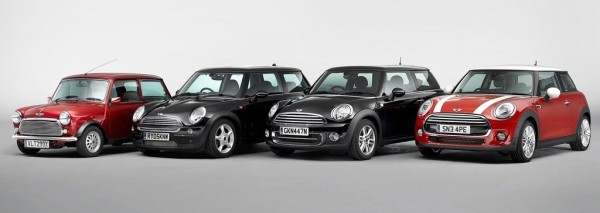
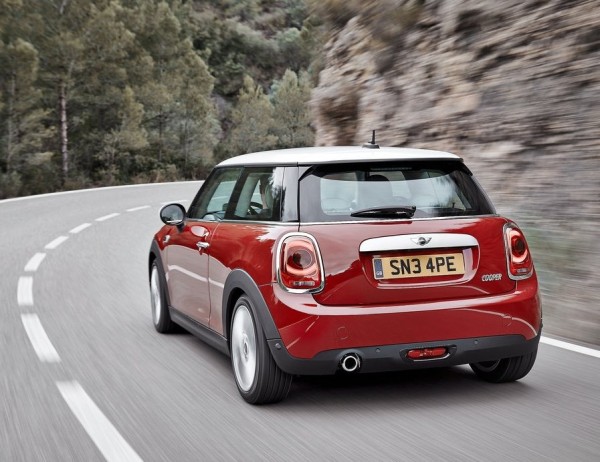
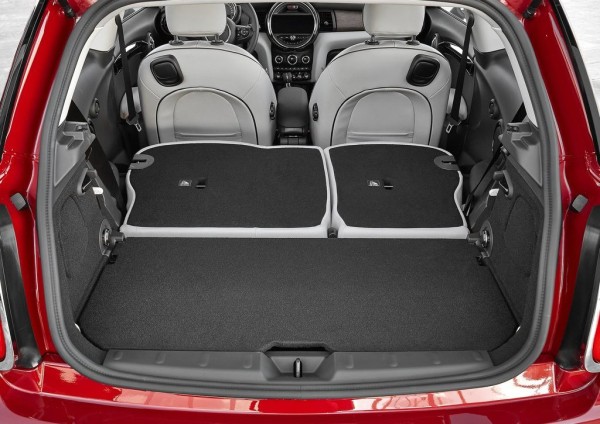
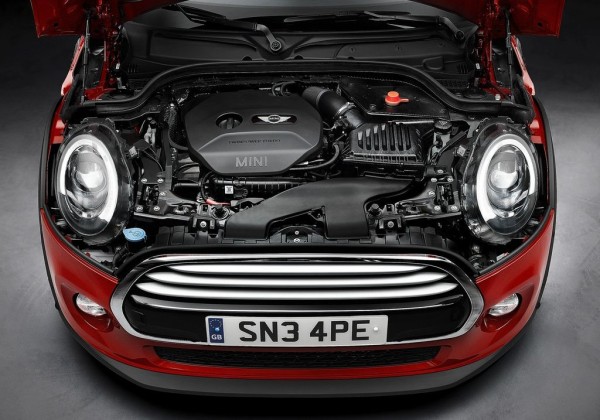
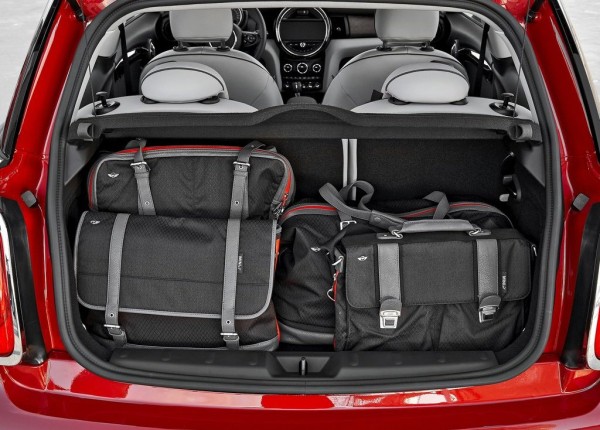

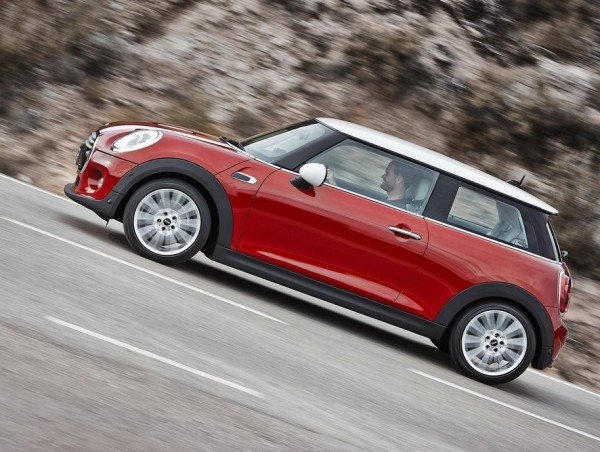
hello there and thank you for your information – I have certainly
picked up something new from right here. I did
however expertise several technical points using this website, since I experienced to
reload the website lots of times previous to I could get it to load properly.
I had been wondering if your web hosting is OK?
Not that I’m complaining, but slow loading instances times will often affect your
placement in google and could damage your quality score if advertising and marketing with Adwords.
Well I’m adding this RSS to my e-mail and can look out for a lot more of your respective
fascinating content. Ensure that you update this again soon.
Hi mates, its wonderful piece of writing regarding cultureand completely defined, keep it up
all the time.
Thanks for some other informative site. Where else may I
am getting that type of info written in such a perfect
means? I’ve a undertaking that I’m simply now running on, and
I have been at the glance out for such information.
Hi there! Do you use Twitter? I’d like to follow you if that would be ok.
I’m definitely enjooying your blog and look forward to new updates.
Hello! I’m at work surfing around your blog from my new
iphone! Just wanted to say I love reading your blog and look forward to all your posts!
Carry on the outstanding work!
my page scroll saw reviews
No matter if some one searches for his required
thing, therefore he/she needs to be available that in detail, therefore that thing is maintained over
here.
Feel free to surf to my weblog – belt sander reviews
Since the hello of this website is working, no question very soon it will be famous, due to its feature contents.
I every time emailed this web site post page to all my contacts, because if like to read it next my friends will too.
Feel free to surf to my weblog; additional reading
My programmer is trying to convince me to move to .net from PHP.
I have always disliked the idea because of the expenses. But he’s tryiong none the less.
I’ve been using Movable-type on numerous websites for about a year and am concerned about
switching to another platform. I have heard great things
about blogengine.net. Is there a way I can import all my wordpress posts
into it? Any help would be greatly appreciated!
my website … Metabolic Cooking
I’ll right away snatch your rss feed as I can’t in finding your email subscription link or newsletter service.
Do you have any? Kindly let me know so that I may subscribe.
Thanks.
my web site cheap handgun safe
) You can get this in the previous owner, the website you’ve found the auto on, or
it is usually located on the driver’s side in the vehicle where the dash meets the windscreen. In today’s world of accounting software systems, however,
you need to utilize the accounting program
to help keep track of sales commission through
joudnal entries made to the general ledger as each item is
sold. On the site you will find details related to the offers, specials and a whole
lot more that is in connection with the dealership.
Terrific post however , I was wondering if you could write a litte more on this subject?
I’d be very thankful if you could elaborate a little bit more.
Cheers!
I quite like reading a post that can make men and women think.
Also, thank you for permitting me to comment!
Just wish to say your article is as astonishing. The clearness to your post is simply excellent and
i can think you are a professional in this subject.
Well along with your permission allow me to clutch your
feed to stay up to date with imminent post. Thanks one million and please continue the rewarding
work.